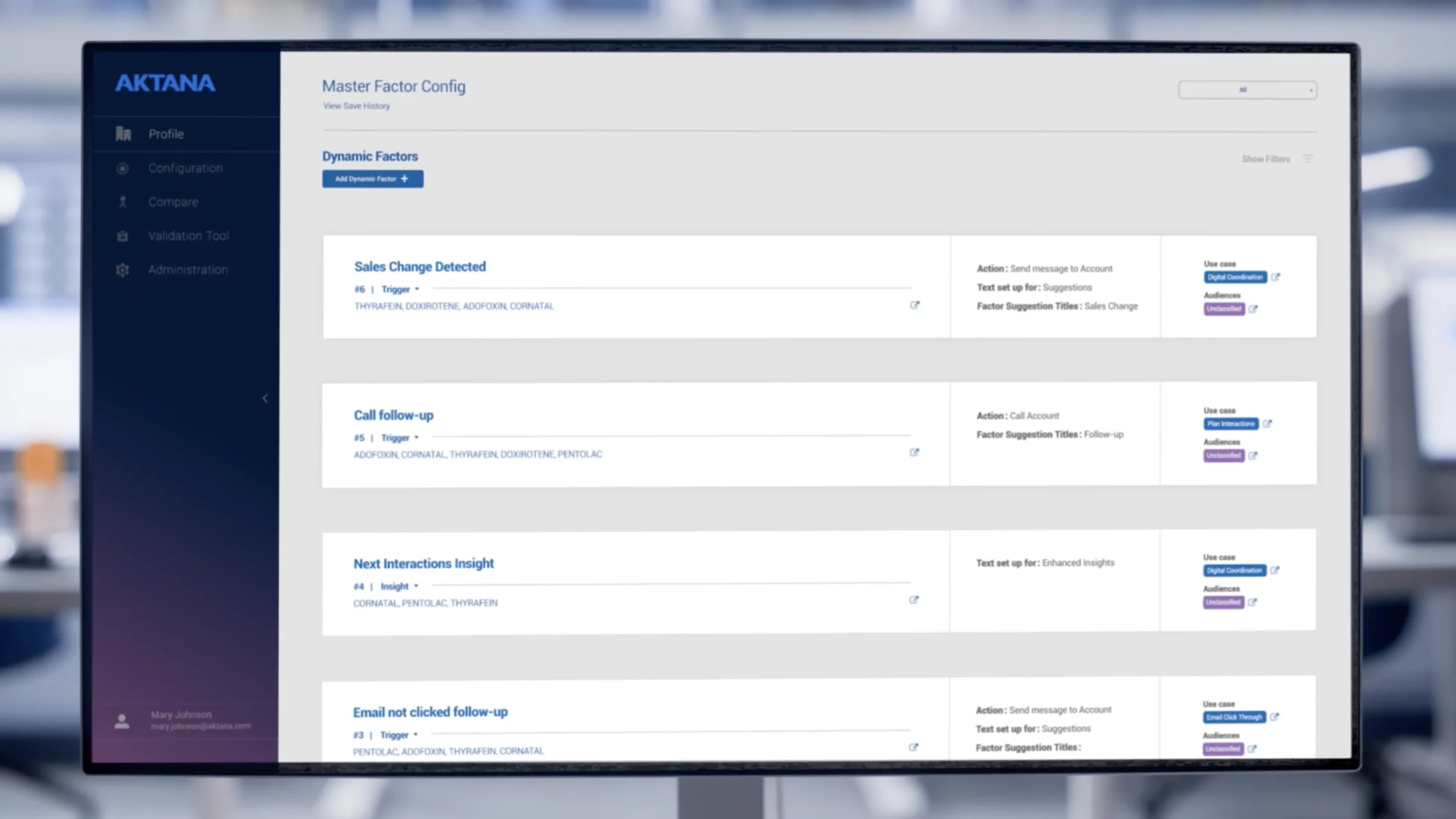Are you ready to bridge the gap between marketing and analytics-driven engagement strategies and business impact? In this webinar, Jeremy Flax (VP, Product Strategy) and Sandeep Kapoor (Sr. Director, Product Management) demonstrate how Aktana’s AI solutions are crafting a new era of engagement where every action is measured, every result is assessed, and every strategy is refined for maximum impact.
Discover how Aktana’s Strategy Console doesn’t just track KPIs but transforms them into actionable insights that drive continuous improvement. Learn how to:
- Codify business objectives and KPIs to anchor your engagement strategies.
- Continuously measure and attribute impact, especially in high-stakes field activities.
- Intervene proactively with insights and recommendations to optimize engagement strategies.



